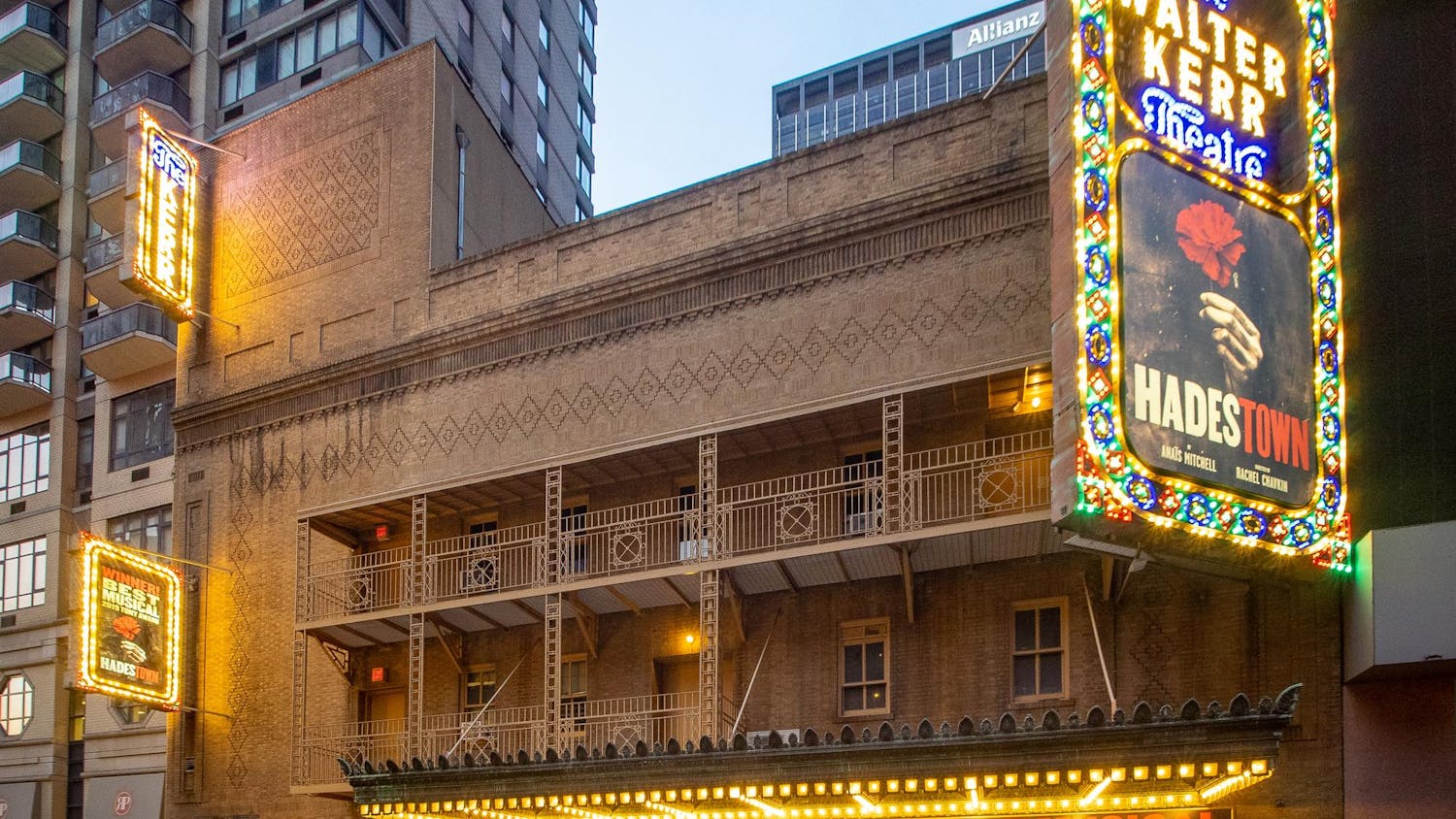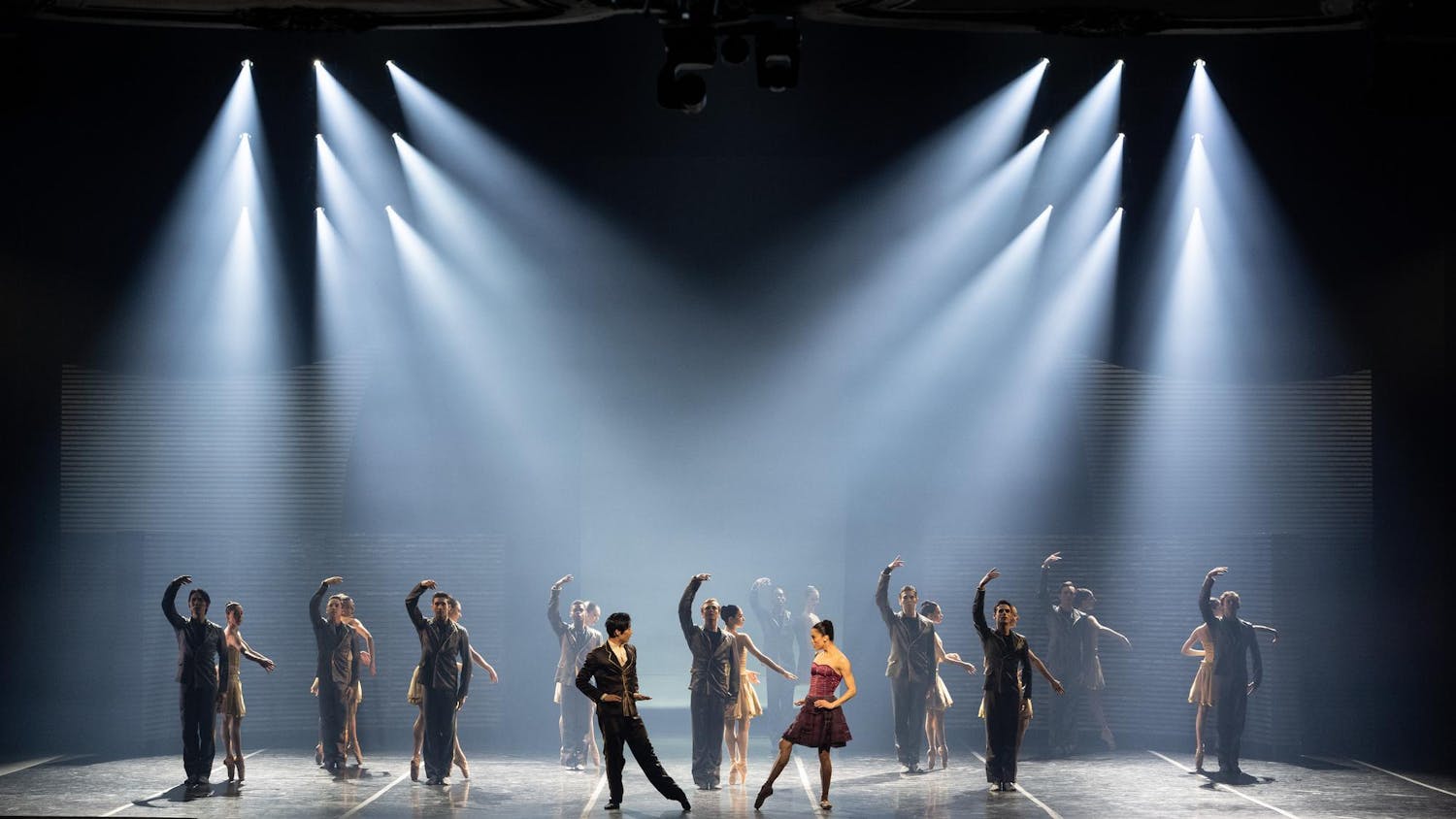Walking into the Boston Museum of Fine Arts' new exhibition of traditional Japanese paintings, "Drama and Desire: Japanese Paintings from the Floating World 1690-1850," the fresh and dynamic look of the show is utterly striking. The architecture of the entryway promotes a feeling of seclusion with a latticework of white beams, shrouding the paintings inside in an atmosphere that feels more like a temple than a museum gallery.
The set up invites close, prolonged contemplation, which is exactly what these masterpieces require. The MFA has created an encyclopedic exhibit showcasing a traditional art form. The way to appreciate the detail and skill inherent in these works is to sit with them and absorb them, the way one would savor the precision of a tea ceremony or a flower arrangement.
Imagine a panorama spread out, a street scene of theaters and brothels, beautiful women swaying past beggars, a samurai getting pick-pocketed. This is what Hishikawa Moronobu created in the first room of the exhibition, showcased behind shallow glass, a small yet complete world for the entranced viewer to enter. In his graceful painting, a solid-gold cloud obscures and splits the scene, allowing multiple narratives to unfold in different places, highlighting the Nakamura Kabuki theater and the Yoshiwara pleasure quarter of 17th-century Tokyo.
These are the surroundings that Moronobu experienced in 1684 when the work was made.
Two screens, over eight meters of painting total, become a manifestation of the dreams of a culture. Who might have commissioned or bought these pieces? Rich gentry who wanted to contain all that they loved about their country or their city were the most popular customers. The artists in turn fulfilled the dreams of their patrons, creating tiny narratives that unfold before the viewers' eyes, ever fresh, ever open to interpretation, never ceasing to marvel.
A few paintings here, created in scroll form, seem to have been made particularly for a patron's private use. Though it may seem at first vulgar, Torii Kiyonobu's "Erotic Contest of Flowers" is one of the most delicate and subtle demonstrations of painterly skill and aesthetic sense in the show. The couples depicted in different positions in each picture have subtly elongated bodies and gracefully curving outlines that bring to mind both calligraphic landscape painting and modern-day anime. The wall-text describes these scrolls as made for "private contemplation," but they fit in and readily complement the more formal pieces in the show.
It is important to remember that these kinds of paintings were not painted to serve as autonomous pieces of art or decoration. Much of the popular perception of traditional Japanese art is a result of advertising: posters of popular kabuki actors or announcements of play performances. One incredible example of the latter is displayed here. Created by the Torii school, a theater signboard depicting dramatic scenes from the upcoming season of plays is meant to attract customers, but the poster succeeds as a piece of art in itself. The composition is a complicated array of figures in various poses, swinging a sword, holding an umbrella or staring menacingly. Created in 1758, the style is much looser than that of the paintings destined to decorate an aristocrat's house. They communicate the emotions of their characters in clear and strong lines. Far from being effete like some portraits of courtesans or nature scenes, these advertisements are muscular; they shout their message in beautifully loud colors.
The 'Floating World' that the title of this exhibition references holds particular relevance to modern times. 'Floating World' refers to the youth culture that sprang up in the urban centers of Tokyo, Kyoto and Osaka in the 17th century. The term is used as a kind of metaphor: The world of the young, the vivacious and new, is a world unto itself, just as each painting is a world of its own - but why 'drama and desire'? Drama and desire are what keep the Floating World alive.
Art thrives on youth culture, and youth culture in turn thrives on the novel: each new play, each new beautiful woman, each new vista around another corner, whether it be in their lives or the natural beauty of their city and country. In "Drama and Desire," culture is a wellspring that never ceases to inspire.





